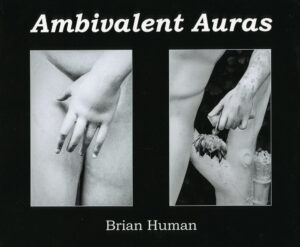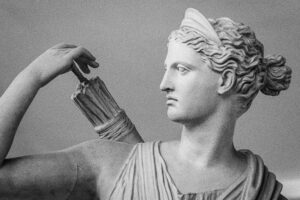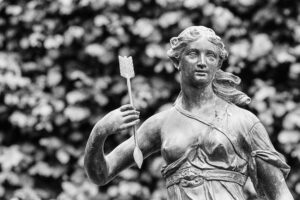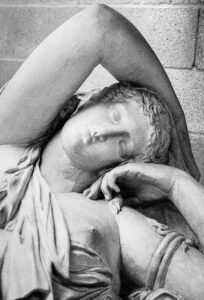I’ve finished the project that started out as Classical Contrasts and became Ambivalent Auras and brought the work together on a photo book. An introductory essay which explains the thinking behind it starts:
‘Classical sculpture is ambivalent: both cold, hard stone or metal and the sensuous realisation of the body human and divine. Pygmalion carved a woman out of ivory to temper the ambivalence and created a statue so beautiful and realistic that he fell in love with it. In a final resolution Aphrodite brought the figure to life. The gods do not work such magic now and we are left with the chilly beauty of blank-eyed statues that we study and admire as works of art. Yet the context in which we see them determines how we appreciate them and how they speak to us. Two remarkable collections, legacies of very different people in different times, exemplify this.’
After short descriptions of the collections at Anglesey Abbey and the Museum of Classical Archaeology, the essay explores the idea the auras surrounding the sculptural figures.
‘There are some obvious similarities between the two collections: both contain sculpture derived from works of art; both display works representing the ancient Greek and Roman worlds; and neither includes original archaeological pieces. This affects how we view and understand the works, how they speak to us in the 21st Century. Walter Benjamin argued that the aura of a work of art derives from the combined authenticity (uniqueness) and locale (physical and cultural) of its creation; and explains that “even the most perfect reproduction of a work of art is lacking in one element: its presence in time and space, its unique existence at the place where it happens to be” located.
Benjamin was writing principally about the “mechanical reproduction” of paintings, but in his terms the Museum’s casts and Abbey’s sculptures have weakened auras: they are copies of ancient originals or are derived from ancient ideas and they have been removed from the settings for which they were created. However much we may enjoy them, we regard them with less awe than if they carried the accumulated numen of millennia. But is that equally true of both collections? If we can’t have the true aura, there may be a secondary aura associated with the original works of sculpting and casting at Anglesey Abbey that is not generated by the greater reproductive artificiality of the casts at the Museum.
While there is much that unites the collections, the biggest difference is the setting in which the statues are seen.
The Museum provides a calm, well-lit, clean, temperature controlled environment for quiet contemplation and study. Sometimes a tutorial or a visiting school group may break the silence, but it is essentially a neutral space with little to distract from the pristine figures. Neat labels give museology information, name, origin, date and so on. The figures are imperiously indifferent to our gaze and to being locked in – they look as though they sleep soundly at night.
The Abbey furnishes an outdoor setting where the figures are seen in relation to trees, shrubs and grass; their appearance and impact changes from hour to hour, day to day, week to week and month to month. They may be bathed in sunlight or rain; the air may be redolent of cow parsley, wisteria or leaf mould; leaves rest on them, they have a patina of lichen; and birds leave their marks and spiders their webs. They are accompanied by birdsong, wind in the trees and the laughter of children at play. They spring surprises on visitors; and in the imagination they roam the woods after dark.
The settings determine how the figures speak to us – one detached, the other intimate. Time has stopped for the motionless casts; they exist in a past rooted somewhere in the 19th Century at the point of their incarceration: the Museum is their mausoleum. The figures in the Abbey gardens are still at large in the world and time lives on in them, they continue to age, showing their decay, and take on the character of the weather they endure, smiling in the sun and scowling in the rain. They speak to us through the hint of a Pygmalion resurrection.’






